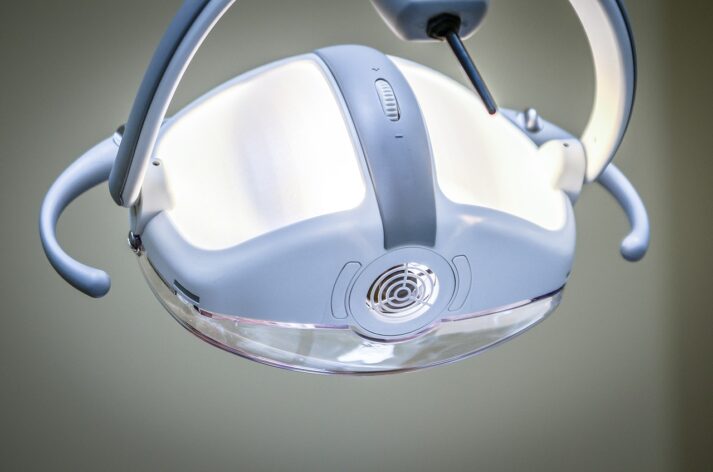http://www.marksdailyapple.com/
 Today’s post is from Jennifer Dene at Paleohacks.
Today’s post is from Jennifer Dene at Paleohacks.
Ready to develop your upper body? Skip the isolation exercises and build functional arm strength with these 20 easy bodyweight exercises — no gym membership required!
Functional training exercises mimic moves that we do in real life. These exercises often include compound movements that integrate multiple muscle groups at once. The benefit of functional training is increased strength, agility, mobility, and reduced risk of injury.
When it comes to increasing arm strength, many workout routines isolate the “vanity muscles” — biceps and deltoids in particular get a lot of love and attention. Unfortunately, these isolation exercises can cause an imbalance in muscle development, which puts the arms and shoulders at increased risk of strain or injury.
The key to well-developed arms (that are as practical as they are pretty) is to focus on functional, compound movements. Each arm workout should include a combination of mobility, stability, and strength exercises, targeting each of the muscles through the upper and lower arms, and the front, back and sides of the shoulders.
This workout starts with mobility and stability exercises that are suitable for all levels. It then moves on to a series of basic bodyweight arm exercises; your current level of strength will determine how challenging you find these moves. The final “power set” is best suited to individuals with advanced fitness. Feel free to skip any of the exercises in this section until you are ready for the challenge.
The moves in each section prepare you for what will come next. For example, the inchworm prepares your body for a push-up, which prepares your body for a power push-up. Start at the top and work your way through.
Mobility & Stability
Arm Swings: Dynamic stretching warms up the muscles you will be using during your workout. Stand with your back straight and abs engaged, gently start swinging your arms out to the side and then crossing them in front of your body, alternating which arm swings in front. Gradually start making the swings larger so you can feel a slight stretch in your chest and between your shoulder blades. Swing arms 20-30 times.

Wall Clocks: Wall clocks are a great exercise for shoulder stability as they recruit your rotator cuff and scapular stabilizers. Place your hands on a wall about shoulder-width apart. Without shrugging your shoulders up, slide one hand out to the side, still touching the wall. Move the hand back to the starting position. Perform 3 sets of 5 on each side.

Scapula Retraction (Shoulder Blades Squeeze): This exercise will strengthen the middle back muscles, which keep your shoulders healthy. Stand with your shoulders relaxed and arms down by the side. Gently retract your shoulder blades by pretending you are trying to squeeze a tennis ball in the middle of your back. Release the shoulders back to the starting position. Keep your upper shoulders relaxed throughout the exercise. Perform 3 sets of 10.

Extend & Flex: Training the forearms, wrists and hands in all planes of motion will help you improve your grip for weighted arm exercises, as well as reduce elbow and wrist strain. Start with your arms extended away from your chest, palms facing down, and fingertips reaching long. Bend the wrist and point the fingertips down towards the ground. Flex the wrist and point the fingertips up towards the ceiling. Keep a slight bend in the elbows and keep the upper arm still as you move the wrists. This exercise strengthens and stretches the forearm flexors. Perform 12 to 16 repetitions in each direction.

Inchworm: This exercise prepares your body for push-ups, which will strengthen the chest, arms, shoulders, and core. Start by standing at the end of your mat with your feet hip-distance apart. Bend forward to place your hands flat on the mat in a forward fold (your knees may bend slightly). Walk your hands out about a foot at a time all the way out into a full plank position. Hold in the plank for a second or two, walk your hands all the way back into the forward fold, and roll up to standing. Repeat 5 times.

Chest Foam Roller Stretch: When your chest muscles get tight, it pulls your shoulders into a forward rounded position. This weakens the back of the shoulders and compromises your ability to perform planks and push-ups. Lie down along the center of a foam roller or rolled up blanket. Press your low back flat against the roller. Open your arms to the side at a 45-degree angle and let gravity bring your arms down towards the floor. Stay in this position and breathe for 1 – 2 minutes.

Upward Facing Dog: This move wakes up the back of the shoulders, and the triceps at the back of the upper arm. Keep your elbows tucked in towards your torso. Lay on your stomach and place your hands under your shoulders, with your palms flat on the floor. Draw your chest forward, press down through the tops of the feet and straighten your arms to come to Upward-Facing Dog. The legs are strong and active, the shoulders are relaxed down away from the ears, and your focus is on extending through your upper back, not stressing your lower back. Hold for 3 seconds before lowering. Repeat 3 – 5 times.

Basics
Mastering basic functional arm exercises is an absolute must before moving on to the more complex, and power-based, moves. The following exercises strengthen the arms and shoulders, as well as the core. If you are advanced enough to complete the entire workout, including the “power” section, the basics act as the second phase of your warm up.
Wide Pushup: Having a wide hand position will allow you to focus on your chest muscles and front shoulder muscles. Start in a full plank position, with your hands slightly wider than your shoulders and in line with your chest. Engage your abs, and lower into a push-up. At the bottom of the push-up your elbows should bend to the side at a 90º angle. Press back up to the starting position. Repeat 5 – 10.

Narrow Pushup: This variation focuses on the tricep muscle, which is smaller and weaker than the chest, making it a bit harder than the wide push-up. Start in a full plank position with your hands directly under your shoulders. Engage your abs and lower into a push-up. At the bottom of the push-up your elbows should be close to your sides, with the elbow joint pointing back. Press back up to the starting position. Repeat 5 – 10.

Lateral Plank Walk: This exercise strengthens the lateral delts; these muscles help you lift objects straight out to the side of your body. Start in a full plank position with your hands directly under your shoulders and feet hip-distance apart. Slightly shift your weight into your left hand and leg as you step your RIGHT hand and foot out about six inches to the right. Slightly shift over to the right side of your body as you step the LEFT hand and foot to come back underneath you. Continue stepping your hands and feet over to the right for 5-10 “steps” before stepping back to the LEFT. Repeat 3 rounds.

Forearm Side Plank: This targets the shoulder stabilizers, triceps, and obliques…all muscles that can get ignored during every day life! Lay on your RIGHT side, stacking your hips and feet. Position your bottom RIGHT elbow directly under your RIGHT shoulder. Lift your bottom hip off the ground to create a straight line in a plank. Your should be lifting from your bottom oblique and feel a slight pinch in the waistline. Reach your top hand towards the ceiling or place it on your top hip. Hold for 10 – 30 seconds. Switch sides. (To modify this exercise, keep your bottom knee on the ground.)

Rear Deltoid Raise: This exercise can be done with or without free-weights. Stand with your feet shoulder-width apart, holding your dumbbells with palms facing in. Hinge from your hips and lower your torso down towards the floor so that it is almost parallel to the floor. With a very slight bend in the elbows, squeeze your shoulder blades together as you raise your arms out to the sides. Slowly and with control, lower the weights back down. Be sure to relax your traps and neck as much as possible. Repeat 3 sets of 10 repetitions.

Tricep Dips: Use a kitchen chair, coffee table, park bench, or even the side of your bed for this exercise. Sit on a chair or table and place your hands on the edge so that your fingers are hanging off. Keep the shoulders over the wrists as you lift your hips up and place them just in front of the chair. Bend your elbows and lower your hips down, making sure to keep your elbows pressing back and your chest lifted. Press back up using the backs of your arms. Repeat 3 sets of 10 repetitions.

Reverse Plank: This targets the triceps, rear deltoids, and stretches the chest. Start seated with bent knees, feet flat on the floor, and the arms extended behind you with fingertips pointing towards your feet. Keep a slight bend in the elbow, squeeze your backside and then lift the hips straight up, so that you’re in a flat line from throat to knees. The head can look up to the ceiling or down along the thighs. Continue to squeeze the legs and lengthen the spine as you hold for 5 breaths. To advance, straighten the legs. Repeat 3 rounds.

Decline Pushup: This is a progression for regular wide or narrow push-ups. It increases the resistance, and focuses on the upper part of your chest and the shoulders. The higher your feet are elevated the more challenging the exercise will become. Place your hands on the floor, wrists a little wider than shoulders*, and carefully step your feet back onto a (stable) chair or bench. You should now be in plank position. Perform a push-up, bending the elbows to the side, and keeping your spine completely flat. Start with a smaller decline and work your way to a higher level, once you’re ready. *You can use the wide or narrow push-up hand position. Repeat 3 sets of 5 – 10.

Pike Pushups: This push-up targets the top of the shoulders, similar to an overhead press, and prepares your body for handstands! Start in a downward-facing dog position, with the hands wider than the shoulders. Shift more weight into your hands than your feet, and look at your belly button to keep your neck in line with your spine. Bend the elbows out to the side and lower until the crown of your head just hovers above the ground; press back up. Repeat 3 sets of 5 – 10.

Dead Hangs: This exercise strengthens your grip (hands and forearms), and prepares your body for the pull-up. Find a horizontal bar, which you can easily jump up to and reach. Jump up and hold onto the bar, with the palms facing away from you. Now hang there, but here’s the key—maintain tension in your upper body, back, and core. It’s easy to dangle from a pull-up bar, but during a dead hang your shoulders should be down and your core tight. This helps activate the muscles you’ll need for pull-up power. Hold for 10 – 30 seconds.

Power Set
These final four exercises are definitely advanced. They use multiple muscles, require great core strength and postural alignment, and may or may not be right for you today. If you’re not quite there yet, keep at it and use these exercises as a goal.
Push Offs: This exercise adds an explosive element to the push-up, which engages more muscle fibers throughout the entire arm, shoulders and core. Start in a plank position with your hands directly under your shoulders. Bend the elbows to lower down towards the floor, keeping your elbows close by your sides, as if you were doing a narrow push-up. As you press back up, power through your arms and push the hands an inch or two off the ground. Land softly, immediately bending the elbows back into another push-up. Repeat for 10-20 repetitions, and modify by doing this raised on a bench or chair if needed.

Wide to Narrow Pushup: To take the previous exercise even further try switching between a wide and narrow push-up, after each hand “jump.” Begin by performing a narrow-style push off, as written above. However, once you have powered off the floor, quickly separate your hands further apart, to land in a wide push-up position (elbows bent to land). Push off again and land in the narrow position (elbows bent to land). That’s one full repetition. Complete 4 – 8 full repetitions.

Pull Ups: This is a fantastic exercise for functional upper body strength. Depending on your grip, you can target biceps, triceps, lats, traps, shoulders, and core. Find a horizontal bar, which you can easily jump up and reach. Pictured is a traditional neutral-grip position, but you can also do wide or narrow variations (wide grip, palms face away from you, narrow grip, palms face towards you). Jump up and hold onto the bar. Then draw your shoulder blades down your back and away from your ears. Use your biceps, and squeeze your shoulder blades together as you draw your chest up towards the bar—holding at the top for a second. With control, lower back down and repeat for 10-20 repetitions.

There you go: 20 moves for your workout today. Let me know which ones will make it into your routine this week. A big thanks to Paleohacks for the fantastic list! Have a great day, everybody.
The post 20 Easy Bodyweight Exercises To Build Functional Arm Strength appeared first on Mark’s Daily Apple.










 For now classes are 6pm and 640pm at 2840 Wildwood st in the Boise Cloggers studio.
Book your class NOW!
click this ==>
For now classes are 6pm and 640pm at 2840 Wildwood st in the Boise Cloggers studio.
Book your class NOW!
click this ==>








